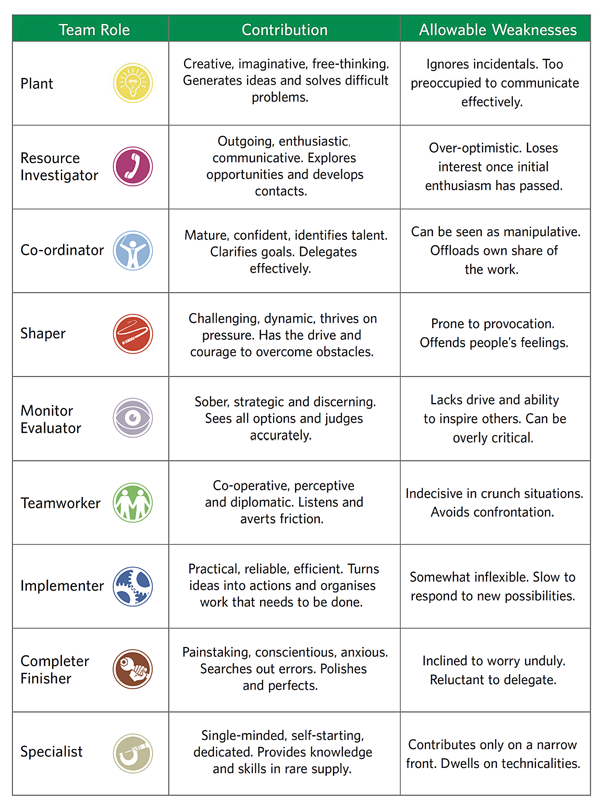Team roles
Understanding different roles within a team.
- Moderate
- A few hours
In the 1970s, Belbin and his colleagues examined many high and low performing teams to investigate why some teams worked and other didn’t. Their research revealed that the difference between success and failure of a team was more dependent on behaviour of the team members rather than on factors such as intellect. They developed a tool that looks at how people actually behave in the workplace and can help identify which roles members of your team are best suited to take on. We all have preferred roles, roles that we can do , and one that we should avoid. Each role has its strengths and weaknesses and each has equal importance.
It is best used at the start of a project when the team is newly formed. It can serve to highlight any critical gaps in the team.

Summary table of the various Belbin team roles.
A Belbin assessment uses a Belbin Self-Perception Inventory and feedback from their colleagues. A Belbin report is produced for each team member that helps pin-point individual Team Role strengths (and weaknesses) to communicate and share with the rest of the team.
More information
See Belbin team roles explained (PDF) for more detail on each role.

